As the owner and principal of technology design firm OneButton, Matt Emmi constantly strives to understand what truly matters to his clients. “I find that people don’t really want speakers, they want music,” he says. “They don’t want a lighting control system, they want to turn off all the lights in their home with one button. We prefer to take a classic approach to modern technology."
It’s that nuanced insight into client desires that has helped Emmi and his team become trusted design partners among perhaps the most visually discerning audience imaginable: the art world. From illuminating works produced by renowned artists like Dustin Yellin and Theo Pinto, to helping gallery owners and enthusiasts bring greater depth and dimension to their collections, Emmi has a unique perspective on the interplay between art and light—and how to optimize the power of each. We sat down with Matt to talk about his process, and learn how he and his team use Ketra to illuminate art in entirely new ways.
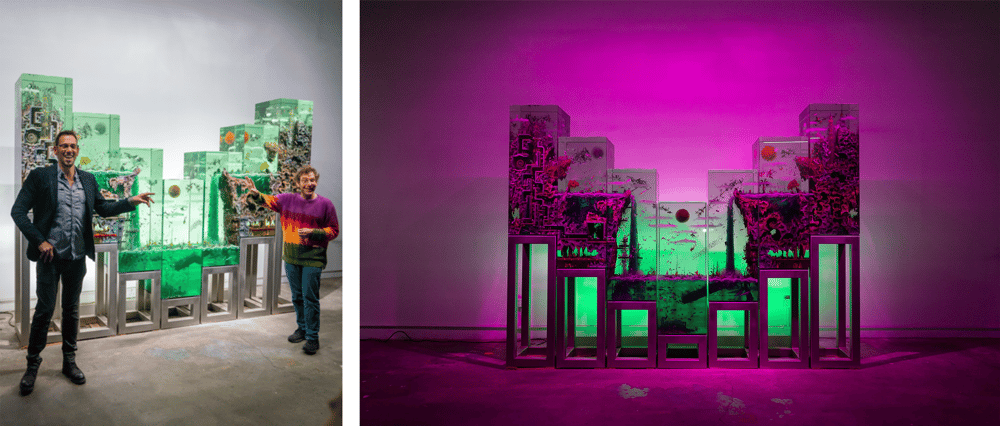 (left) Matt Emmi and Dustin Yellin stand in front of Dustin's work The Politics of Eternity. (right) The Politics of Eternity illuminated with saturated Ketra light.
(left) Matt Emmi and Dustin Yellin stand in front of Dustin's work The Politics of Eternity. (right) The Politics of Eternity illuminated with saturated Ketra light.
To start off, can you share a bit about your background and approach to lighting?
I’ve been in the Technology Design business for 20 years. I started with designing home theaters, which led to other projects in those homes such as distributed audio, lighting control and shades. My firm, OneButton, does residential and hospitality projects mainly, but also some really unique projects, like our collaboration with artist Dustin Yellin. As far as approach, we find that the more responsibility we can have over a project from the start, the more we can ensure a positive, creative result. Ultimately our aim is to marry the client’s desires, the architect’s vision, and our performance objectives. Ketra helps us make that happen. It’s given us new domain over lighting—we're the ones designing the system, programming it for the client, and maintaining it.
What was it like introducing Ketra to Dustin? Can you walk me through the design process?
Because Ketra is such a new medium, the quality and type of light you can generate from the system is unknown to most people. It's not reasonable to engage with the customer and say “What do you want to do?” They simply can’t fathom what is enabled by the technology. We find it’s easier to give clients something to react to. We do the base programming, set fundamental lighting scenes, and then create together from there— and we followed that same process with Dustin.
Previously, the Psychogeographies were displayed under theatrical projection lights—around 3400K—that registered too warm. With Ketra, we started with a scene at a more color accurate 4700K. We then explored how Vibrancy interplayed with the color palette of the Psychogeographies to provide a more vibrant, yet accurate color. From there, we played with angles of light, distance of the light from the pieces, and further tuned the color of the light specific to the segment of each piece. Having experienced the fundamentals, Dustin especially enjoyed playing with colored light to tint the pieces, using the color almost as a paintbrush to highlight different sections. Ketra enabled Dustin to see his art in a totally new light and it was really cool to see him rediscovering older pieces.
Because of all the fine detail, it’s been said that Dustin’s pieces are a unique experience from 10 feet away, five feet away, and one foot away. Did you take that into consideration when lighting them?
Yes, we had specific focus on that one-foot experience. With the existing lighting, you could only see the first couple of layers of glass. But with Ketra, the light penetrates deeper, expanding the field of view and allowing viewers to appreciate depths that were previously shrouded. Our goal is to captivate the viewer with the intricacies of the pieces. Up close, you can see the motifs and clever imagery—you get the deeper messages Dustin is conveying. You also really get a greater sense of how much work goes into these creations.
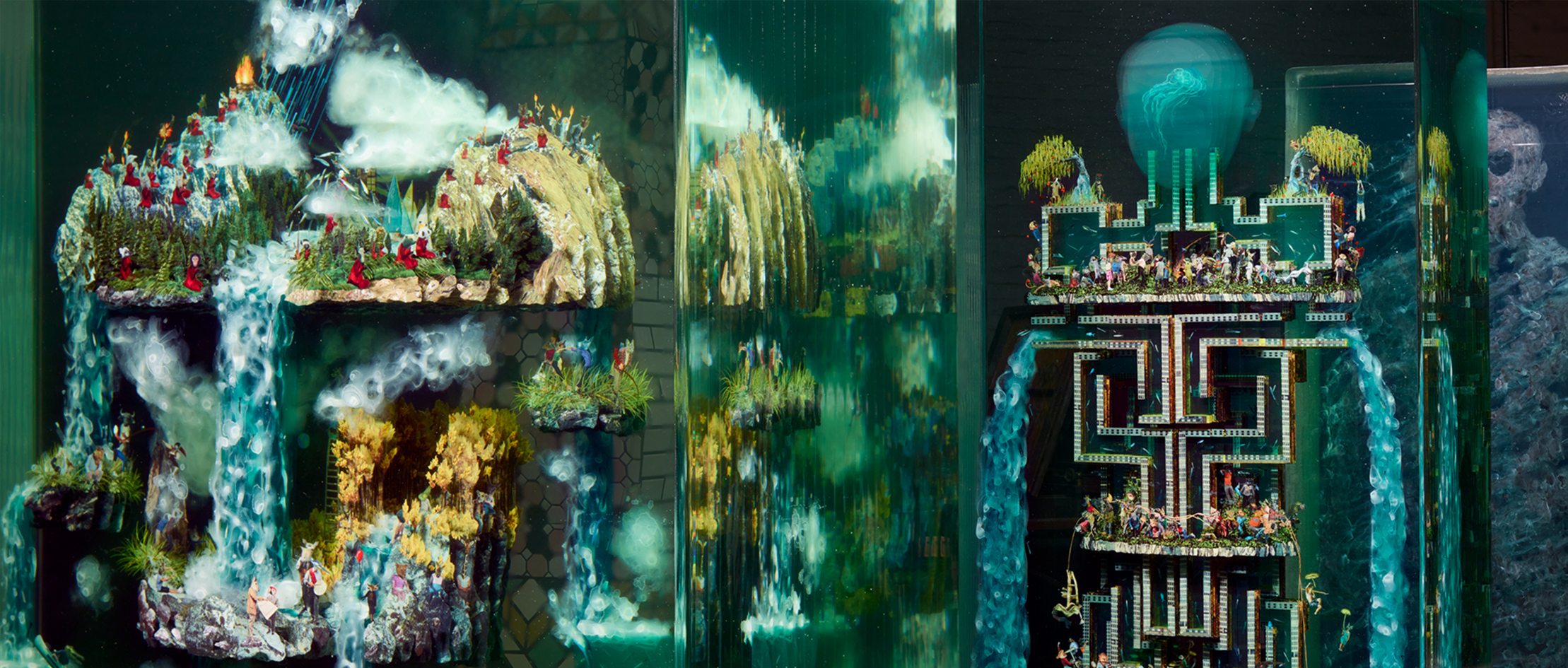 Dustin's Pyschogeographies series are humanoid sculptures comprised of layers of collage encased in glass
Dustin's Pyschogeographies series are humanoid sculptures comprised of layers of collage encased in glass
With the existing lighting, you could only see the first couple of layers of glass. But with Ketra, the light penetrates deeper, expanding the field of view and allowing viewers to appreciate depths that were previously shrouded.
Did you use any of Ketra’s natural light capabilities?
We did. Dustin’s studio and gallery already has natural light flooding in through ceiling skylights, so we wanted to expand upon that. These works have been displayed outside under sunlight before and they look amazing, they just sparkle. We were able to capture that feeling inside for the first time ever. The flexibility that Ketra gives you across the dimming range, the X-Y coordinates of color, and the spectrum of color with Vibrancy—there were just so many possibilities it enables. For this project, we replicated the sun at various degrees and times of day, and the results were simply beautiful.
Do you find there’s a difference between lighting 3D pieces like these sculptures vs. more traditional 2D art?
We had previously illuminated artist Theo Pinto's 2D oil on canvas works in his Skyscapes series, inspired by when the day meets night and sky meets earth, with Ketra. With that project, the artist knew that these gradient pieces totally transformed when viewed under sunset lighting—so we replicated that golden hour with the system. Now they can be optimally lit any time of day, and Theo, like Dustin, insists that his work be installed with Ketra.
One of Theo Pinto's paintings transformed under Ketra light
For the 3D sculptures, you quite literally get another dimension. You have to think more about how to effectively light the whole piece. For instance, with the Psychogeographies, we saw that having a light between pieces allowed us to backlight the head of each figure. This created a “halo” effect, helped separate the works, and ended up showing more detail than if we only lit them all separately.
On some of Dustin’s larger pieces like The Politics of Eternity, we utilized backlighting with a row of G2 linears bounced off the back wall to complement the track heads. The backlights are what creates the spectacular look of ambience - a sun setting or environmental changes. Having 2 separate layers of light enabled more dynamism—we could keep the S30’s fixed at 4700K and then vary the temperature or color of the back or vice versa.
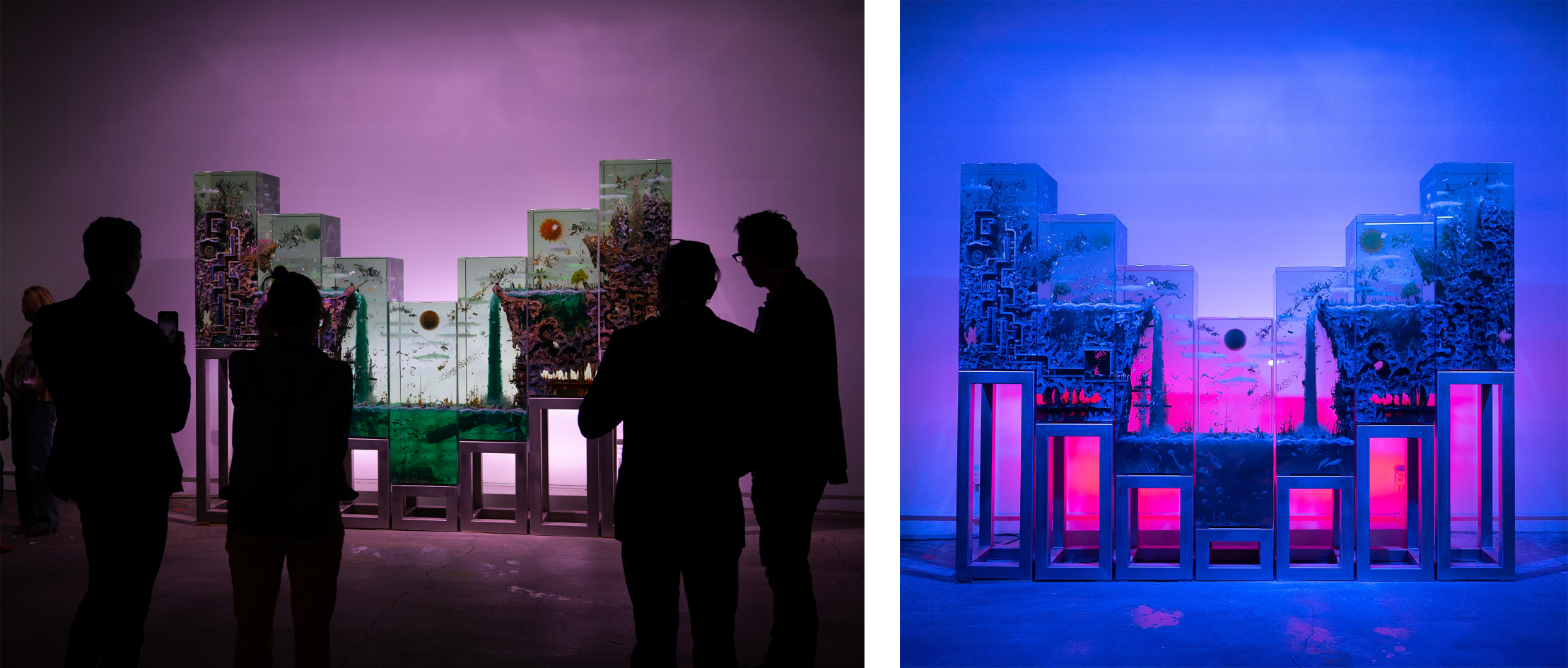 G2 linears add a dynamic layer of light, giving the dramatic appearance of a sun setting at the touch of a button
G2 linears add a dynamic layer of light, giving the dramatic appearance of a sun setting at the touch of a button
In what other ways does Ketra help you deliver a quality experience for clients?
It may seem like a system with Ketra has to be intrinsically complicated given the power and flexibility of the product, but its core functionalities are effortless. The magic is in one of the default behaviors: the Natural Show which matches not just the temperature as the sun outside but the intensity as well. It enables us to actually simplify the controls for the homeowner: the lights are working on their own to create a mood that matches the environment.
It’s the sort of win-win-win product we’re always looking for: where the user gets a better experience, it’s easier to use, and it delivers the highest quality performance. It’s been exciting to expose Ketra to art galleries, artists, people who want high performance lighting in their home and show them what’s possible. Wherever we’re putting it, we’re excited for it to be there.
What should homeowners know about the role of a custom integrator when lighting their art collections?
Work with a great firm that you vibe with. They'll be a partner in the design process, so it’s important that you appreciate their artistic intention and expression. A custom integrator can spur the architect and designers by showing them what’s possible with the vast capabilities of technology like Ketra. You'll also get the best outcome if everyone is working together with the integrator, architect, and designers all on the same page.
Thanks so much for taking the time to talk to us today. What’s next for you?
Dreaming up more interesting events, and looking forward to doing more at Dustin Yellin’s studio. We’re finishing up some exciting projects on the West coast where we have an LA Based office. And I’ll be on the lookout for creative inspiration during summer travels with my family and two baby girls.
Explore OneButton's other projects here and see how Matt transformed Dustin Yellin’s gallery using light as an artistic medium at our case study here.
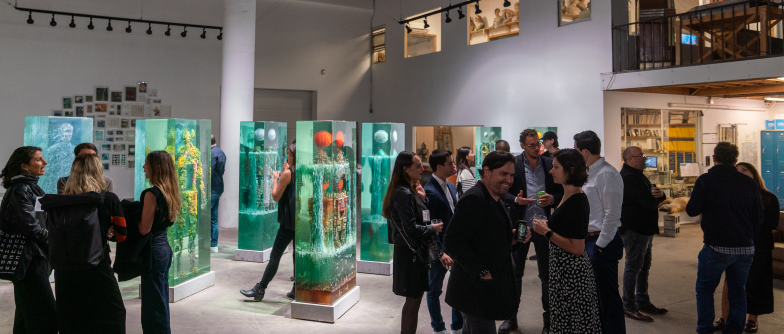 Photography: OneButton and John Frattisi
Photography: OneButton and John Frattisi
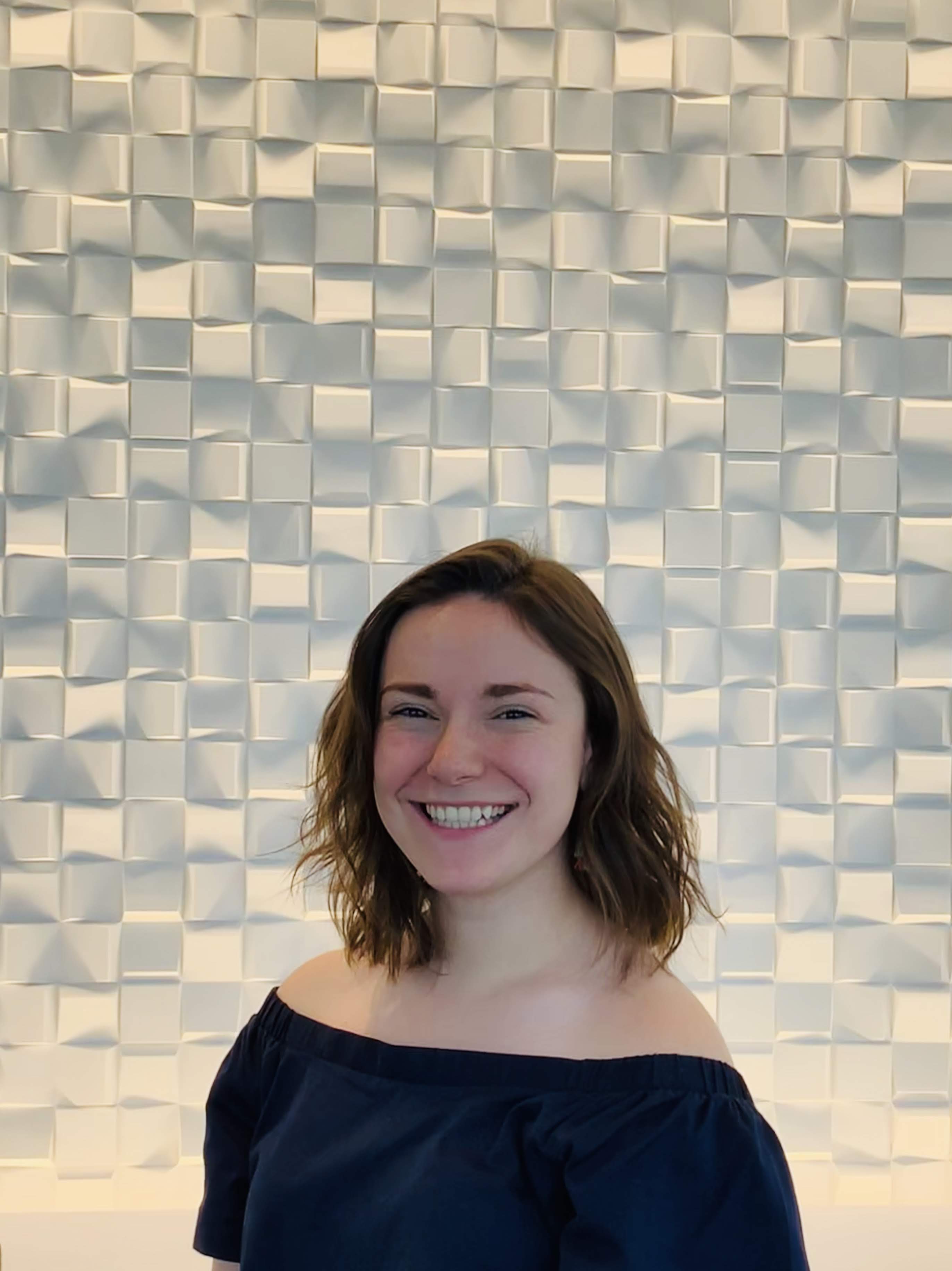
24/7 Technical Support:
1-844-LUTRON1 (588-7661)
lightingsupport@lutron.com
Customer Service:
Monday-Friday 8am- 5pm EST
1-844-LUTRON1 (588-7661)
The Ketra logo, Ketra, TruBeam, Color Lock, and Calibration360 are trademarks or registered trademarks of Lutron Electronics Co., Inc. in the US and/or other countries.
©2025 Lutron Electronics Co., Inc. All rights reserved.
Get inspired with all the best from Lutron and Ketra: exclusive news, project features, and more.